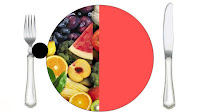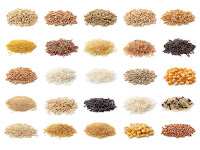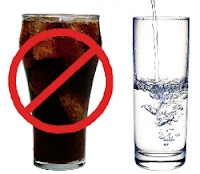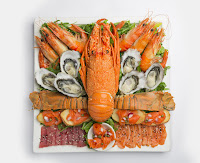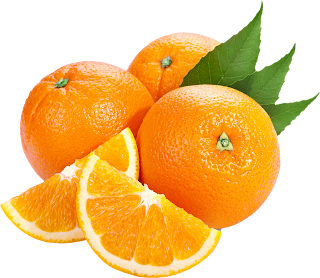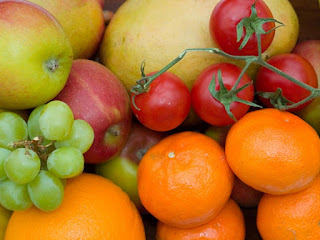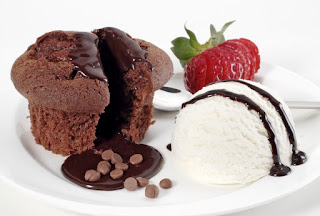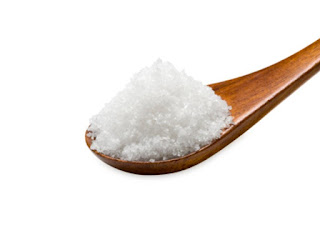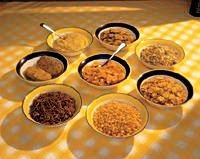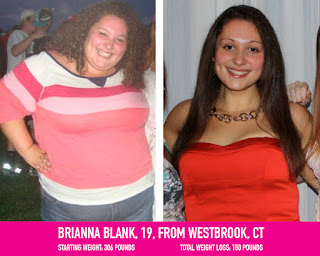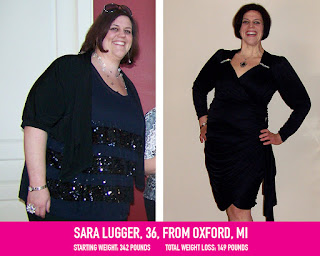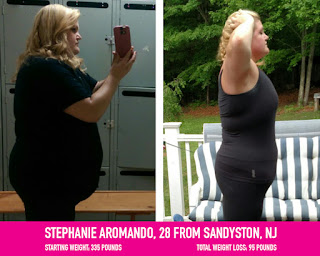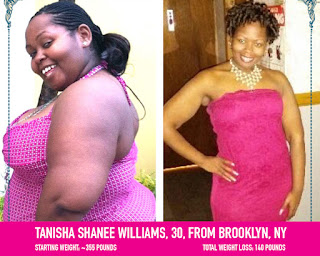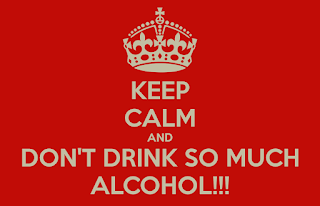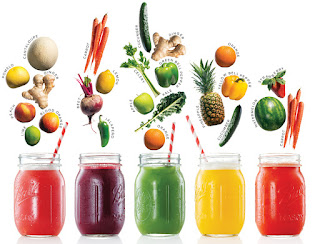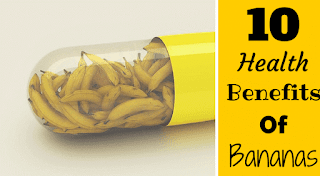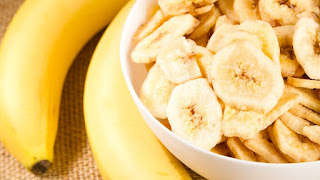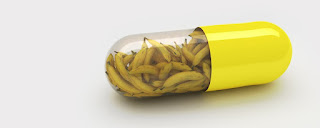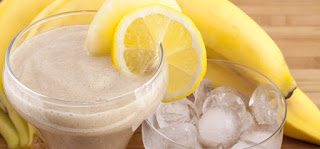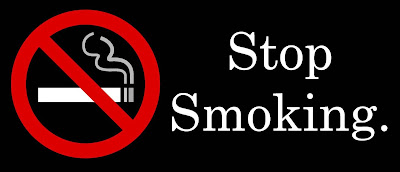How healthy are you? Do you have a healthy diet? Do you exercise regularly? Do you drink at least 8 glasses of water a day? Do you get enough sleep every day?
Our body is our temple, and we need to take care of it to have a healthy life. Do you know that a shocking over 65% of Americans are either obese or overweight? That’s insane! Think of your body as your physical shell to take you through life. If you repeatedly abuse it with unhealthy food, your shell will wear out quickly. While you may look okay on the outside, on the inside, your arteries are getting clogged up with cholesterol and arterial plaque. That’s not a pretty sight!
Life is beautiful and you don’t want to bog yourself down with unnecessary health problems. Today, your vital organs (kidney, heart, lungs, gall bladder, liver, stomach, intestines, etc) may be working well, but they may not be tomorrow. Don’t take your good health today for granted. Take proper care of your body.
Good health isn’t just about healthy eating and exercise – it also includes having a positive mental health, healthy self-image and a healthy lifestyle. In this article, it'll include 45 tips to live a healthier life. Bookmark this article and save the tips, because they are going to be vital in living a healthier life.
1. Drink more water.
Most of us actually don’t drink enough water every day. Water is essential for our body to function – Do you know over 60% of our body is made up of water? Water is needed to carry out our body functions, remove waste and carry nutrients and oxygen around our body. Since we lose water every day through urine, bowel movements, perspiration and breathing, we need to replenish our water intake.
Furthermore, drinking more water alone actually aids in losing weight. A Health.com study carried out among overweight/obese people showed that water drinkers lose 4.5 more pounds than a control group. The researchers believe that it’s because drinking more water helps fill your stomach, making you less hungry and less likely to overeat.
2. Get enough sleep.
When you don’t rest well, you compensate by eating more. Usually it’s junk food. Get enough rest and you don’t need to snack to stay awake. Also, lack of sleep causes premature aging, and you wouldn’t want that.
3. Meditate.
Meditation quietens your mind and calms your soul. If you don’t know how to meditate, don’t worry – learn how to meditate in 5 simple steps.
4. Exercise.
Not just a few times a week, but every day. Movement is life. Research has shown that exercising daily brings tremendous benefits to our health, including increase of life span, lowering of risk of diseases, higher bone density and weight loss. Increase activity in your life. Choose walking over transport for close distances. Climb the stairs instead of taking the lift. Join some aerobics classes. Take up a sport of your liking (see tip #5)
5. Pick exercises you enjoy.
When you enjoy the sports, you’ll naturally want to do them. Exercise isn’t about suffering and pushing yourself; it’s about being healthy and having fun at the same time. Adding variation in your exercises will keep them interesting.
6. Work out different parts of your body.
Don’t just do cardio exercises (such as jogging). Give your full body a proper work out. The easiest way is to engage in sports, since they work out different muscle groups. Popular sports include basketball, football, swimming, tennis, squash, badminton, frisbee, and more.
7. Eat more fruits.
Fruits are a plethora of vitamins and minerals. Do you know that oranges offer more health benefits than Vitamin C pills? Taking in synthetic supplements are not the same as consuming the foods direct from nature. Fill your palate with these 10 most nutritious fruits: Watermelon, Apricots, Avocado, Apple, Cantaloupe, Grapefruit, Kiwi, Guava, Papaya, Strawberries.
8. Eat more vegetables.
Like fruits, vegetables are important for the well being of our health. Experts suggest that we should have 5-9 servings of fruits/vegetables, and unfortunately most people don’t even have at least 5 servings! Some of my favorite vegetables include: Kidney beans, black beans, asparagus, long beans, french beans, sprouts, button mushrooms and carrots.
9. Pick bright colored foods.
Fruits and vegetables with bright colors are usually high in anti-oxidants. Anti-oxidants are good for health because they remove free radicals in our body that damage our cells. So get your fill of fruits/vegetables of different colors: White (Bananas, Mushroom), Yellow (Pineapples, Mango), Orange (Orange, Papaya), Red (Apple, Strawberries, Tomatoes, Watermelon), Green (Guava, Avocados, Cucumber, Lettuce, Celery), Purple/Blue (Blackberries, Eggplant, Prunes).
10. Cut down on processed food.
Processed foods are not good because (1) most nutritional value is lost (2) the preservatives added are bad for our health. Many processed foods contain a high amount of salt content, which leads to higher blood pressure and heart disease. Processed foods are anything that are not in their raw form. In general, most of the food in supermarket are processed – the more the ingredients on the label (especially the ones ending with ‘ite’ or ‘ate’), the more processed they are. Watch out for those with salt/sugar as the first 5 ingredients and go for natural foods as much as possible.
11. Love yourself.
How much do you love yourself on a scale of 1-10? Why? How can you love yourself more starting today? In Day 20 of 30DLBL, we explore the notion of self-love and get you started on loving yourself more.
12. Barefoot walking/running.
There have been many proven positive benefits of barefoot walking/running, from better posture, less stress for your feet, less stress for your joints, etc.
13. Purge negative people from your life.
Positive mental healthy is an important part of a healthy life. You don’t need toxic people in your life. If you feel that a friend is overly critical or negative, then let him/her go.
14. Purge negativity from yourself.
You don’t need negativity from yourself either. Listen in on the thoughts that come up in your mind and get rid of the negative thoughts you hear. A lot of eating happens because one feels unhappy, so by staying in a positive, up state by yourself, you cut out that unhealthy dependence on food to be happy.
15. Journal out unhappy thoughts.
One great way to purge negativity from within is to do brain dumping exercises whenever you feel frustrated. This is something I do with my 1-1 clients as well, where I ask them to journal out their deepest thoughts so we can address them. Don’t keep these thoughts pent up inside of you – it’s not healthy.
16. Avoid trigger foods.
Trigger foods are the foods that make you go berserk and binge like crazy after you eat them. Everyone’s trigger foods are different (mine are donuts, pastries, pasta and chips), but generally trigger foods are candy bars, chocolate, confectionery, chips, cookies, or anything with high level of refined sugar, salt, fat or flour. These foods cause a blood sugar imbalance, hence triggering one to eat more. What are your trigger foods? Identify them and remove them from your diet.
17. Breathe. Deeply.
Oxygen is a vital source of life. You may know how to breathe, but are you breathing properly? Most of us don’t breathe properly – we take only shallow breathes and breathe to 1/3 of our lung capacity. Athletes are coached proper breathing techniques to get their best performance. A full breathis one where your lungs are completely filled, your abdomen expands and there’s minimum movement in your shoulders.
18. Address emotional eating issues.
Emotional eating is eating to fill an emotion, rather than real hunger. Do you eat when you feel stressed out, down or frustrated? Do you reach out for food when you hit a block at work?Chances are, you’re emotional eating. However, emotional eating will never make you feel happy, because you’re trying to fill a void that has nothing to do with food. Food doesn’t give you love or happiness; it’s just food.
19. Eat small meals.
Choose several small meals over a few big meals a day. This balances out your energy distribution throughout the day. In general, eat when you feel hungry, and stop when you’re full (see tip #20). You don’t need to wait until official meal times before you start eating. Listen to your body and what it tells you.
20. Stop eating when you feel full.
Many of us rely on external cues to tell when we’re full, such as whether everyone has finished eating, whether your plate was empty or not. These are irrelevant – you should look at internal cues, such as whether your stomach feels full or not. Don’t feel obligated to eat just because there’s still food at the plate.
21. Go for brown carbs vs. white carbs.
White carbs are refined grains like white rice, pasta, white bread, crackers, noodles, tortillas, wraps, anything with white flour and breading. The nutrients have been removed in the production process, leaving them rich in calories but low in nutrients. They also cause unhealthy spikes in our sugar levels. Go for brown carbs (unrefined complex carbs) instead, like brown rice, whole grain, oats, oatmeal, legumes, nuts. These come with nutrients and vitamins intact.
22. Live a life with purpose.
Positive health starts from within! Are you living a life of meaning? Are you living in line with your purpose?
23. Say no to oily food.
Reduce your intake of fast food, fries, doughnuts, chips, wedges, and foods that have been deep fried. Not only are they very fattening (1 tablespoon of oil is 120 calories), deep fried food contains acrylamide, a potential cancer-causing chemical. According to a BBC report, an ordinary bag of crisps may contain up to 500 times more of the substance than the top level allowed in drinking water by the World Health Organisation (WHO). There are better alternatives, such as grilled, steamed, stir-fried or even raw food (see tip #41).
24. Cut out sugary foods.
These are your candy bars, your pastries, chocolate, cookies, cakes and jelly donuts. Not only do they not fill you, they trigger you to eat more due to the sugar rush they cause (see tip #16). Go for healthy snacks instead (see tip #36) – you’ll be more satisfied and happy.
25. Go organic.
Organic foods are foods produced without “synthetic inputs such as pesticides and chemical fertilizers, do not contain genetically modified organisms, and are not processed using irradiation, industrial solvents, or chemical food additives”. (Wiki) The organic movement is slowly catching on, with more supermarkets, especially in US, offering organic options. Organic food tends to cost more, but hey – would you rather save some money and feed your body with pesticides or pay a few extra dollars for a cleaner, healthier body?
26. Improve your posture.
Good posture improves your breathing (see tip #18) and makes you look more smarter and more attractive.
27. Cut out soda and caffeine.
Drinks with caffeine are diuretics – meaning they speed up the rate of urine production. Hence, these drinks do not contribute to your 8 glasses of water/day requirement – they actually take away from it! Furthermore, soda is unhealthy, causes weight gain, is an artificial stimulant, among other reasons. Ditch your soda and go for plain water or fresh fruit juices instead!
28. Don’t drink alcohol.
Like caffeine, alcohol is a diuretic. Not only that, alcohol is repeatedly proven to have negative effects on our body and health – impacting the proper functioning of our brain, liver, lungs, and other major organs. If you drink alcohol regularly, it’s time to cut it out.
29. Prepare your meals.
Lately I’m beginning to appreciate the value of preparing my own meals. When you prepare your meals, you control what goes into them. No more being in a dilemma between eating healthy and choosing between the sub-optimal food choices. Get some quality kitchen equipment – these will be your best investments ever.
30. Learn to say no.
Don’t feel like you’ve to eat just because you’re out with your friends, or because other people offer you food. Simply say no and say you’re not hungry if you don’t feel like eating.
31. Bring a water bottle when you go out.
That way, you can replenish your fluids whenever you want to. It saves you money as well and you don’t need to subject yourself to poor alternatives like soda, which increases your fluid outtake instead (see tip #27).
32. Dine at salad bars more often.
Lately I’m falling in love with salad bars. Salad bars work like this: You pick your greens, you select X number of toppings (usually 6 or limited, depending on the outlet) and you finish off with a dressing. The variety is huge, it’s filling and it’s extremely healthy.
33. Go for low calorie, low fat alternatives.
There are many low-fat / non-fat alternatives today – from yogurts, to salad dressing, soy milk, spreads, ice cream, etc. Check out this comprehensive list: Lower Calorie, Lower Fat Alternatives.
34. Stop smoking.
It has been extensively proven that smoking is detrimental to health, severely increasing the risk of lung cancer, kidney cancer, esophageal cancer (of our gullet), heart attack, and more. Smoking “light” cigarettes does not decrease health risks. Bottom line – if you’re a smoker, quit for better health of not just yourself, but also your family and friends. If you don’t smoke, stay that way and don’t start.
You might also like: Follow 5 Steps "Ways to help you stop smoking successfully"
35. Avoid passive smoking.
Second hand smoking (breathing in air from smokers) causes many of the same long-term diseases as direct smoking (Wiki). Get away from smokers and avoid cigarette smoke where you can.
36. Have healthy snacks.
If you’re hungry during work, eat healthy snacks, like fruits, salads, and fruit juices. These are nutritional and don’t give you that sugar rush. Have them readily available so you can dive in for a munch and stop when you’d had your fill. Get away from cookies and candy bars.
37. Drink fruit/veg smoothies.
It’s a quick way to get vitamins and nutrients. It's tastes great.
38. Juicing.
Juicing is where you extract the juice from vegetables / fruits (via a juicer machine). Since the fibre is stripped away, you are literally drinking the nutrients and minerals directly from the juice! Juices and smoothies complement each other – the former gives our digestive system a break while the latter gives us the fibre which aids our digestion.
39. Go on a vegetarian diet.
First off, going vegetarian doesn’t necessarily lead to better health, because there are many unhealthy vegetarian food out there (fried food, white carb laden diets, etc). On that note, there are many proven health benefits of a vegetarian diet.
40. Go on a vegan diet.
A vegetarian is someone who does not consume animal products. A vegan is someone who doesn’t consume animal or animal-derived products. This means no dairy, honey, cheese, milk, etc. So in that sense, it’s seemingly stricter, but it brings about even more positive benefits on top of a vegetarian diet.
41. Become a raw vegan.
A raw vegan consumes only non-processed, raw vegan food, mainly fruits, vegetables and nuts. Notice that the progression from vegetarian -> vegan -> raw vegan diet is toward foods that are naturally occurring. There are many reported benefits in switching from veganism to raw veganism, including increased youth, weight loss, increased energy, increased health benefits and more.
42. Get out more often.
If you have a regular 9-5 job, chances are you spend most of your times holed up in the office and not a lot of time going out and having fun. During weekends, you’re probably busy with work or running errands. Make it a point to go out with friends at least once a week. Get some sunlight. Go out and have a change in environment. It’ll be great for your body and your soul.
43. Exercise good dental hygiene.
Not only does good hygiene make you a lot more desirable, it is linked with better health (Read AHA Study). Brush your teeth twice a day, rinse your mouth after each meal and floss your teeth at night.
44. Join classes.
Dance classes, aerobics classes, tennis classes, ballroom dancing, scuba diving, wake boarding courses, are all places to start off with. Going there also lets you socialize with a whole new group of people.
45. Hang out with healthy people.
You’re the average of the 5 people you spend the most time with, so the more time you spend around healthy people, the better it is. Eat with people who are health conscious and get workout buddies. It makes healthy living even more fun.
Which health tips are most applicable for you right now? These are timeless tips, so bookmark this article and integrate these tips into your life. Share these health tips with your family and friends too to help them stay healthy – use your Twitter and Facebook via the buttons below.
“Live a Healthier Life in 31 Days” Challenge in Jan 2016!
If you’re wondering why there’s a healthy living post out of the blue, that’s because we’ll be having live a healthier life challenge come first Jan!
Source: personalexcellence.co


